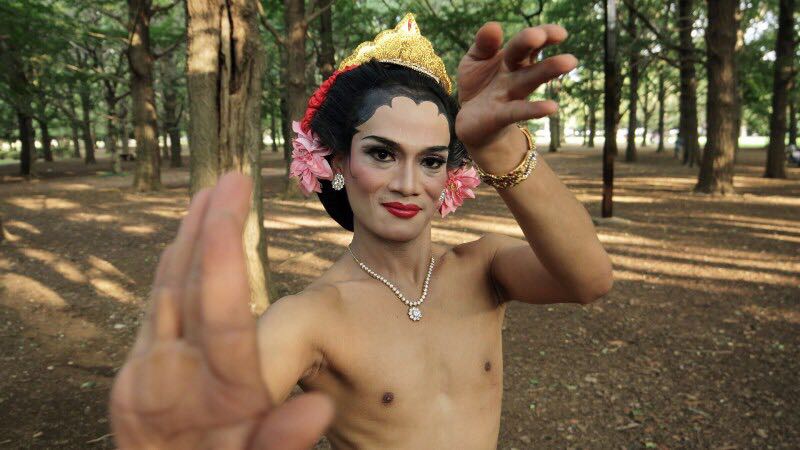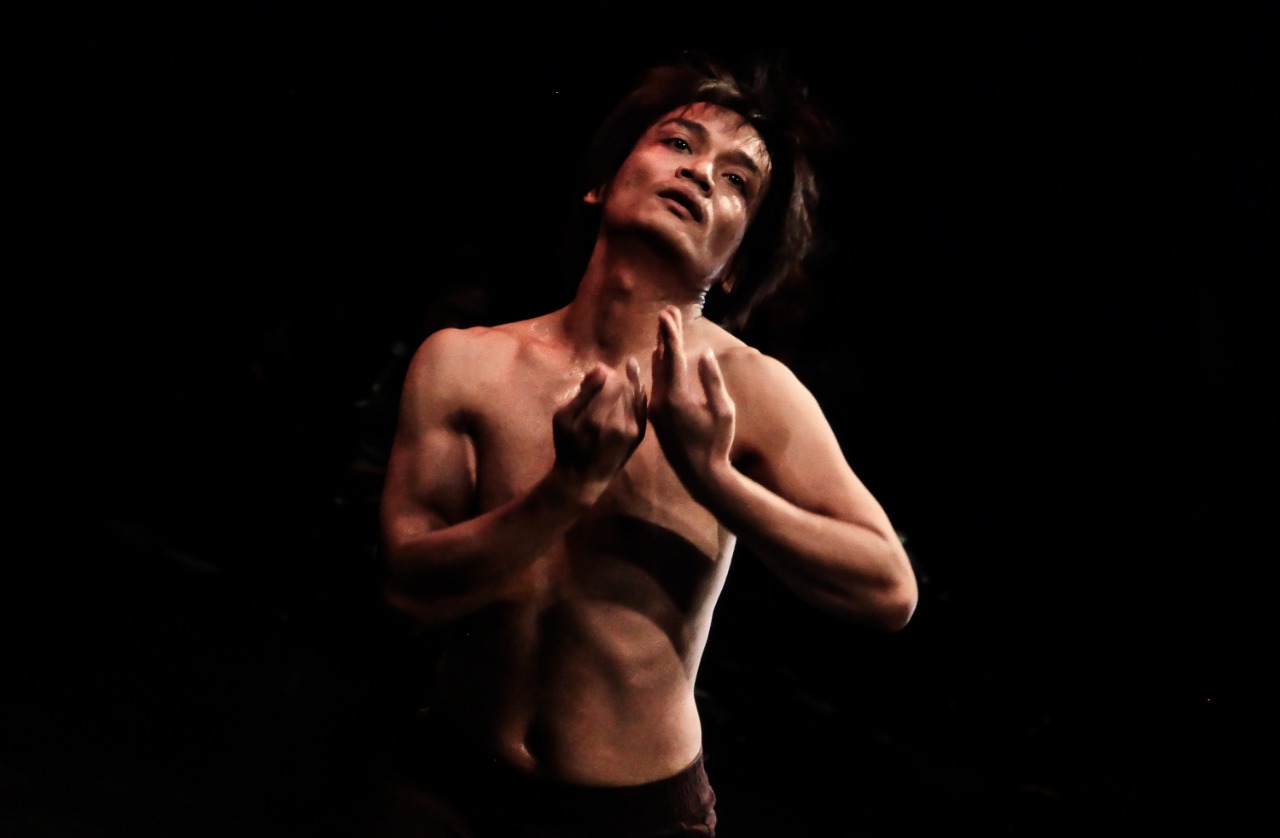Lengger Lanang: Immortalising a vanishing Indonesian dance with the help of motion capture technology

New digital technologies at the Victorian College of the Arts (VCA) are helping to preserve Lengger Lanang, a centuries old cross-gender dance from Central Java.
“I want to help preserve this dance for future generations,” says renowned Indonesian dancer and choreographer Rianto, who along with his collaborators, is engaging sophisticated motion capture technologies at the VCA to document and preserve the traditional Javanese art form of Lengger Lanang.
Rianto grew up in the small Javanese village of Banyumas, the birthplace of Lengger Lanang – an ancient and spiritual cross-gender dance, traditionally performed by men dressed as women.
In the past, Lengger was widely accepted, even idolised, and played an important role in the fertility and harvest rituals of the communities of Central Java. Those who danced Lengger were revered for their abilities to embody both the feminine and the masculine in their performances.
Today, the centuries-old art form is threatened by social change and increasingly intolerant views toward queer expression.

Despite the stigma in his home country, Rianto spent his formative years training to become a Lengger dancer. Since then, he has dedicated his career to furthering the practice of this endangered dance, even establishing Rumah Lengger, in Banyumas, a centre dedicated to training dancers in the style and preserving Lengger traditions.
For Rianto, continuing the practice of Lengger “gives young people a sense of belonging. It’s also important for the older people of the community to see that their tradition is being kept alive.”
“We have lost all of our Lengger masters, those who hold the knowledge of the dance,” he says, “which is why I work so hard to preserve the art form, through sharing it with other bodies, so that Lengger may continue into the future.”
Ancient art collides with new technology
Rianto’s fierce commitment to ensuring Lengger’s longevity led him to a two-week residency at VCA’s TrakLAB, one of the largest and most sophisticated motion capture systems in Victoria, housed in the School of Dance.
At TrakLAB, Rianto is working with long-time collaborator Monica Lim, a PhD candidate at the Faculty of Fine Arts and Music, to record, document and preserve Lengger for future generations.
“We’re using the advanced motion capture system to record movement data of Rianto performing Lengger, which we’ll use to create an archive of the dance,” says Lim, who likens the process of rendering the body through this technology to recording a person’s DNA.

Archiving dance through digital technologies requires a meticulous and thorough approach. The pair have been documenting the names of every single movement before rendering them through the motion capture system.
“There are movements in the Lengger tradition that we don’t have names for,” says Rianto, “so through the residency, and our research, we are having to identify new names for those movements and develop a language around Lengger that wasn’t there before.”
In practical terms, their archive will not only act as a means for preservation but will also help to build a learning tool that can be used to share the art form with students around the world.
“Traditionally, Lengger is taught physically from one person to another, but the archive we are building can potentially be accessed by students anywhere, at any time. They can use the archive to learn and practise the movement,” says Rianto.
The movement renders that are created through motion capture can also enhance the learning experience, because they can be viewed three-dimensionally and from any perspective.

For Lim, the future applications of their research and movement recordings remain boundless and unknown.
“We don’t know what augmented reality or virtual reality technology will be like in the future,” she says, “but we do know that if we capture really detailed data, then we’ll be able to do something with it.”
“We could even recreate Rianto – maybe in real life, in ten years’ time, who knows?”
Beyond the practical applications of their project, Rianto and Monica are also considering what they can do creatively to reframe Lengger through new contexts and perspectives.
“We’ve been talking about using the movement recordings to create a Lengger video game or even interactive sound. We’re still in early stages of the process, so it’s all really open, and this residency is an exploration of what comes next,” says Lim.
The Lengger tradition that has survived until now, with all its transformations, shows the ability of this ancient dance to adapt to its surrounding conditions.
With the advent of new technologies and the dedicated work of Rianto and Monica, Lengger has been thrust into a period of accelerated transformation, ensuring that this vanishing dance will continue to survive for a long time to come.
- Find out more about Research at the Victorian College of the Arts
- Find out more about Rianto and Lengger Lanang
- The Victorian College of the Arts turns 50 this year! Find out how you can get involved

